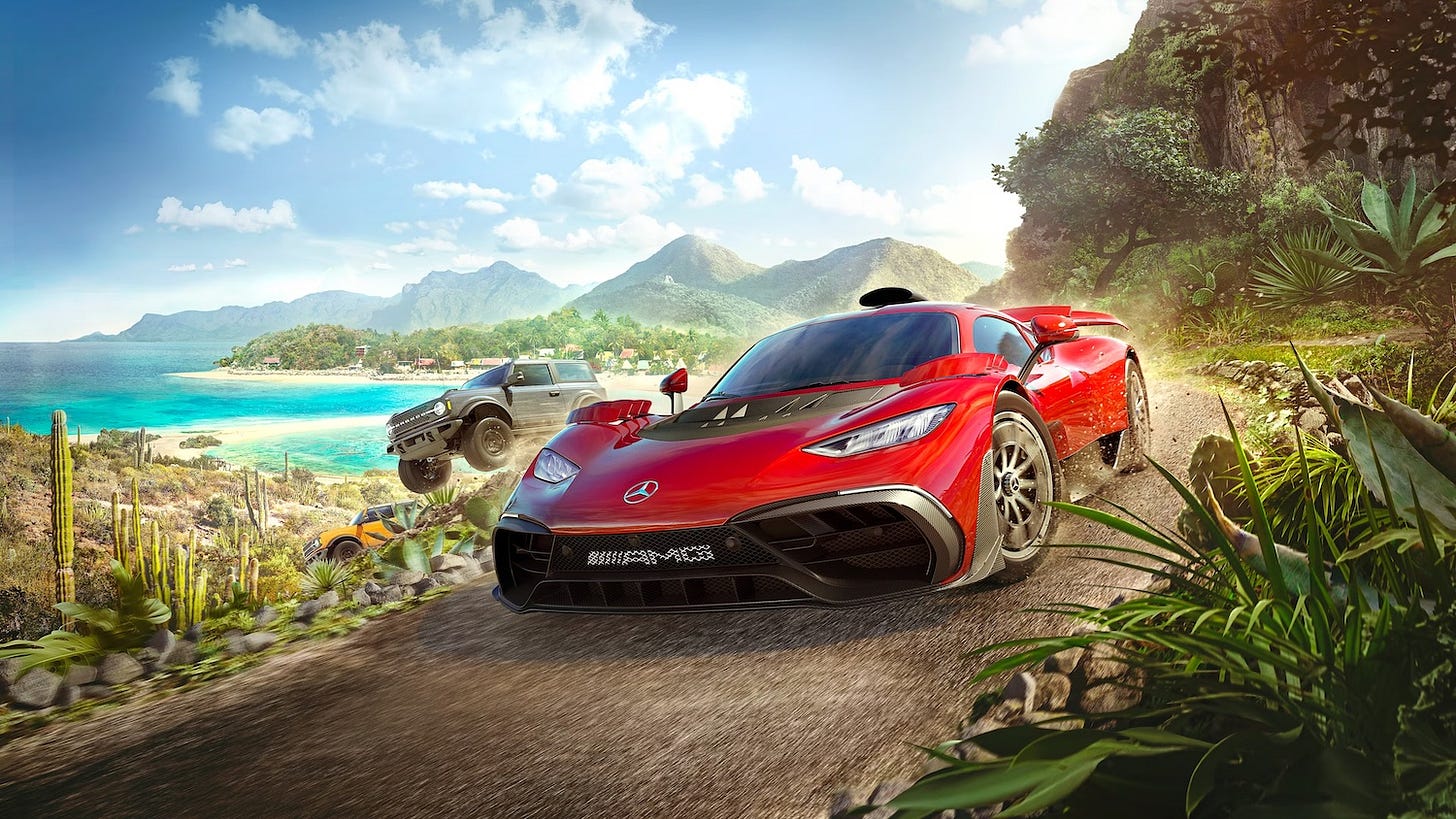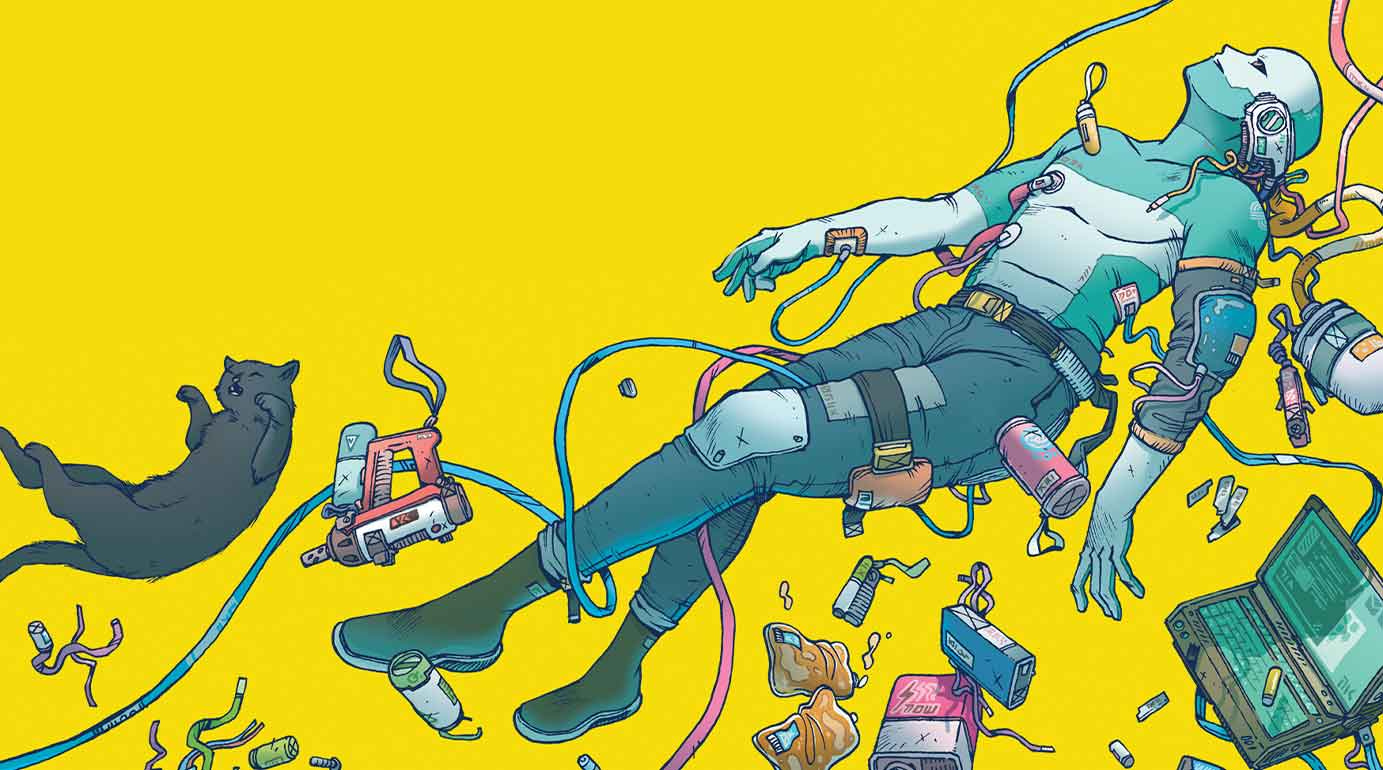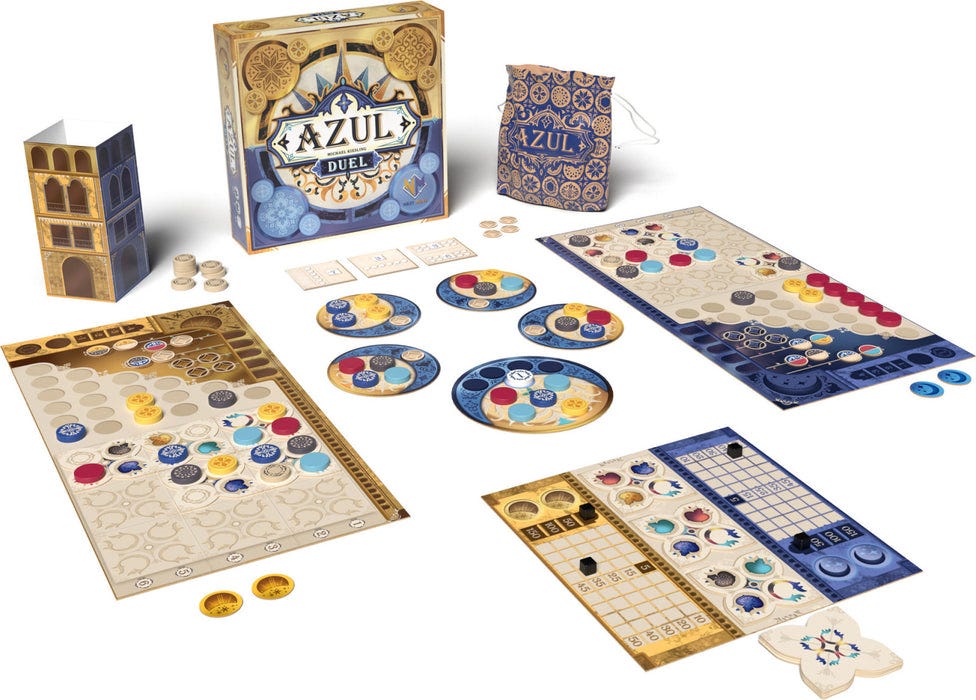...Is Xbox OK?
Blink Twice. Plus best platforms for indie games, board games for 2025, and new old game systems
Happy Monday!
I hope you all got some time to play over the weekend.
This week Alice is trying to guess what Xbox’s strategy is in putting her favourite game on the PS5, and looks at the year ahead for board games. While Tim is getting his consoles and platforms in order for indies and retro games. Plus, recommendations for all the games you should play this week.
Is Xbox OK?
By Alice
In the “console wars” (a contest where ordinary people root for their favourite mega corporation to make more money than the other mega corporation), it’s been said that exclusives are everything. There is very little separating the Xbox Series X and the PS5 (amateur model) in terms of performance, most of the biggest games are released across both, so the better the exclusive you can’t get anywhere else, the more likely you are to be enticed into buying that console.
The last few years, Xbox has not been doing great on that front. I love Forza Horizon 5 an unhealthy amount (and I am living for all these Horizon 6 teasers), but with the exception of Starfield, recent Xbox exclusives just haven’t drawn the same attention or praise as The Last of Us, God of War and Horizon Forbidden West.
With the news last week that Xbox is now planning on launching Forza Horizon 5 on PS5, I’m torn between thinking that this is Xbox giving up on winning the console war, or that this is a brilliant attempt to lure PS5 players over to the Xbox side when Horizon 6 launches later this year. Kind of like a drug dealer offering the first taste for free (or, in this case, probably around $100).
According to The Wall Street Journal, as of June last year, Microsoft is estimated to have sold 28.3 million Xbox Series X and S consoles globally as of June 2024. In comparison, the PS5 sold 61.7 million in a similar timeframe, before the release of the Pro model which would have boosted sales. That’s a huge number of consoles in a rational sense, but viewed through the lens of infinite growth, Microsoft is probably pretty upset. This explains why Xbox is currently going all in on proclaiming that everything is an Xbox in the hopes that they’ll still make money on Xbox Game Pass and games, even if the hardware business isn’t as profitable as they’d hoped. What this means for the next generation of Xboxes is anyone’s guess, but I wouldn’t be surprised if Microsoft leaned harder into the subscription model, and moved away from the hardware focus.
What to play
Citizen Sleeper was one of the finest RPGs of 2022 and its sequel seems to be following up nicely. Citizen Sleeper 2 a dice-based cyberpunk space odyssey with consequential choices, and the interesting premise that your rolls can greatly affect how well your malfunctioning robotic body will perform. It’s on all platforms, and is also included in Game Pass.
A new month means new PlayStation Plus games. This time it’s edgelord heist sim PayDay 3, talking-gun comedy shooter High on Life and 3D platformer remake Pac-man World Re-Pac. They’ll be available for all subscribers to download tomorrow.
Later this week Apple Arcade will add Doodle Jump 2, Stardew-like My Dear Farm and a pretty nice-looking official PGA Tour golf game.
The best platforms for the indiest of indies
By Tim
When it comes to playing the indie and modern retro-style games that aren’t available on the likes of Xbox, PlayStation and Switch, the obvious choice is a desktop PC. But while I pass no judgement on how anyone wants to play, I just haven’t been able to tolerate using a PC to play games since I started having to work on one for half my waking life. So, what’s the best way to do it?
The obvious choice is some kind of consolised PC. Using an Intel NUC or similar tiny Windows machine, you can install and set up games like a desktop and then move it easily to a TV for use with a controller. It’s a simple and comprehensive solution, but still involves a lot of messing around with keyboards and mouses.
These days a handheld gaming PC is a much nicer solution. I favour the Steam Deck because it avoids Windows entirely. Anything on the Steam store is very easy to get at, emulators are a cinch if that’s your thing, and my next favourite fan game or super-indie fixation from itch.io is also a quick install away. Games that work on Linux are best, but Valve’s Proton emulation layer handles most Windows software as well, and I love how easy it is to set up custom art and controller configs so the non-steam games look and play just like the stuff I have bought from the store.
If you’d prefer a more turn-key (but generally more expensive) solution, new dedicated indie machines are becoming a viable choice. Look at Evercade for example, which sells lots of retro-style indie games (as well as, obviously, actual old games) on cartridges. And there’s heaps of different hardware to play them on; the Switch style EXP, Game Boy style Super Pocket, Arcade cabinet Alpha or home console VS.
Getting weirder, I love the monochrome Playdate because it has so many games that don’t (or couldn’t) exist elsewhere. It’s a frivolous luxury of a machine because there’s no way it could become your main gaming platform, but if you really dig into you’ll find plenty of good stuff on the store and even more on platforms like itch.io that you can essentially email to the device across the internet.
Bricks, Boards and Beginnings
by Alice
Last week we looked at how absolutely stacked the first half of the year is going to be for video games, it’s also going to be a great year for board games. Here are some of the titles that I’m really looking forward to in the next few months:
Azul Duel (21 Feb) This one is perhaps a little predictable, but this two-player version of Azul is hands down my most anticipated board game. The story is that you’re decorating the ceiling of the Sintra Palace with different shapes of tiles, and create offers for your opponent. I have deliberately avoided videos so I can experience it fresh, but the pictures and description look great.
Finspan (TBC) Keeping with predictable things, from the creator of the brilliant Wingspan comes Finspan, which looks like Wingspan, but with fish. If it’s as good as Wyrmspan, we’re in for a treat.
The Queen’s Dilemma (TBC) I really enjoyed playing The King’s Dilemma last year, as longtime PAB readers will remember, so I’m hopeful the sequel will live up to the hype. The box art looks pretty good, at least.
Astralis (October) Play as a turtle off the coast of Australia, roll dice, grow the ecosystem, presumably look at pictures of turtles. I’m in.
Baghdad: The City of Peace (TBC) This empire building Euro-style game looks gorgeous. Early previews make it look interesting, and I’m a sucker for a game with interesting resource use.
Speakeasy (soon) is a game about running a Speakeasy during prohibition-era New York, and that’s really all I need to know.
Bonus mention of Lego Monkey Palace, which is technically already out as of January, but I haven’t had a chance to review it yet. It’s a throwback to the days of when Lego board games had some meat on their bones, and I’m excited to play it this weekend.
What games are you looking forward to?
Retro Esoterica
by Tim
Following on from the above discussion of the best indie platforms, it’s worth noting that since the homebrew and retro indie scenes are so vibrant, you’ll also want to consider the new games you can get on old systems. If you have a way to play Game Boy, NES, Mega Drive or Super Nintendo games, then you also have a way to play hundreds of really cool modern indies for those platforms. You can either find publishers making (expensive) new cartridges, or grab yourself an Everdrive for around the same price and load up on ROMs that developers often sell for mere dollars.
The reason I bring this up is because I’ve been playing a lot on the Modretro Chromatic lately, which is a new system compatible with Game Boy Color, and it’s so nice that I’ve been diving back into the world of Game Boy homebrew and having a blast.
If this is your first time hearing of the Chromatic, it’s a brightly coloured and metal-bodied machine that looks a lot more like a shrunken original Game Boy than the curvy Game Boy Color. It has a beautiful screen of the exact same resolution as the GBC but a smidge larger, and wonderful tactile buttons. My main niggle with it is that it uses AA batteries. I understand the thinking here; embedding rechargeable cells puts a shelf-life on the device, while disposables mean it could conceivably last forever. But it’s still annoying.
Modretro (which you should know was founded by VR magnate turned arms dealer Palmer Luckey, a fact which is enough to turn some people off the platform entirely) is also creating its own line of new GBC cartridges. There’s a new licensed version of Tetris which is great, but also modern indies including the excellent Final Fantasy meets Pokemon RPG Dragonhym, which I’ve been playing heaps.
There’s unfortunately no way to circumvent the cartridge slot and play games from an SD card directly, but through my Everdrive I’ve also been discovering or revisiting some excellent modern indies like Traumatarium, Deadus, Opossum Country and Unearthed.
Is the Chromatic the best platform for homebrew? Probably not. For the same price (plus extortionate shipping) you could get the Analogue Pocket, which can play games for so many different platforms with no cartridges needed. And for less, you could get a cheapo emulator handheld from China that can play Game Boy fine. But if the GBC in particular is your jam, this thing is extremely cool.









